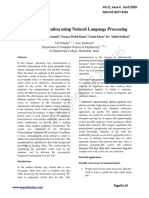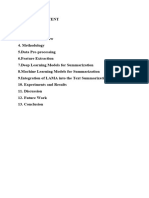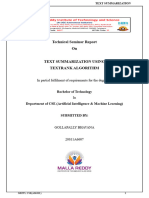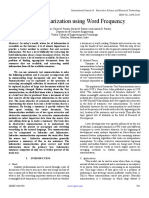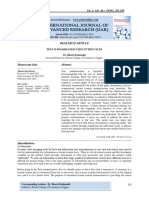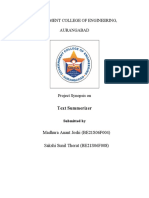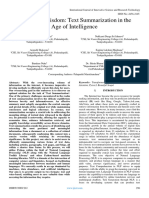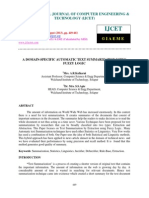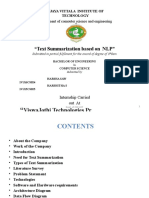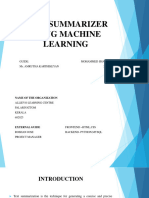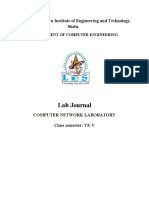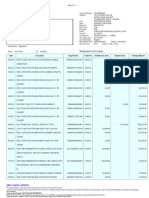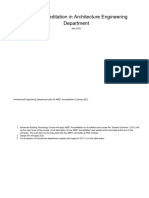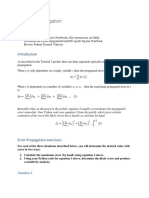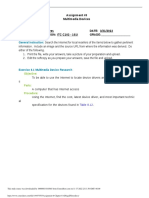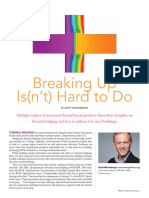0% found this document useful (0 votes)
88 views8 pagesNLP Miniproject
This document presents a mini project on automatic text summarization. It discusses the group members undertaking the project and the introduction, problem definition, proposed solution, workflow and conclusion for the project. The project aims to develop a model for extractive text summarization that identifies important sentences from documents and generates concise summaries.
Uploaded by
Rajshree BorkarCopyright
© © All Rights Reserved
We take content rights seriously. If you suspect this is your content, claim it here.
Available Formats
Download as DOCX, PDF, TXT or read online on Scribd
0% found this document useful (0 votes)
88 views8 pagesNLP Miniproject
This document presents a mini project on automatic text summarization. It discusses the group members undertaking the project and the introduction, problem definition, proposed solution, workflow and conclusion for the project. The project aims to develop a model for extractive text summarization that identifies important sentences from documents and generates concise summaries.
Uploaded by
Rajshree BorkarCopyright
© © All Rights Reserved
We take content rights seriously. If you suspect this is your content, claim it here.
Available Formats
Download as DOCX, PDF, TXT or read online on Scribd
/ 8


